Explore Dubai - United Arab Emirates (UAE) Travel, Asia
Dubai, a city where elegant comfort meets timeless heritage, has grown into a global tourism powerhouse. Known for its awe-inspiring skyscrapers–the Burj Khalifa, the world’s tallest building, pristine beaches, and world-class shopping, Dubai has something for every traveler. Whether you're a solo explorer, a family on vacation, or a couple seeking a romantic getaway, Dubai’s blend of adventure and stunning innovation makes it a must-visit destination in the UAE.
Population: Approximately 3.6 million in 2023.
Economy: Dubai's economy is diverse, driven by tourism, real estate, trade, and financial services. Once reliant on oil, it now thrives as a global business hub with strong infrastructure and innovation.
Landmarks: Famous for the Burj Khalifa, Palm Jumeirah, and the Dubai Mall.
United Arab Emirates
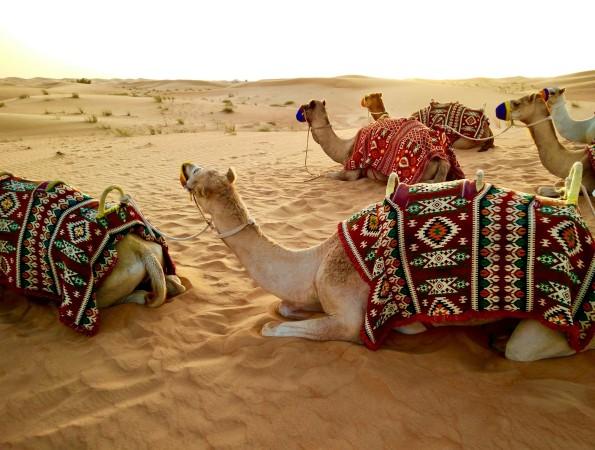
Overview of Dubai
History & Cultural Influence
Dubai's transformation from a modest fishing town to a global city is nothing short of remarkable. For centuries, it was a trading post along ancient trade routes, connecting Africa, Asia, and Europe. Today, Dubai reflects a fascinating mix of old and new, influenced by Islamic traditions, this unique city embraces a multi-ethnic society where modernity and heritage coexist harmoniously. From the beautiful Jumeirah Mosque to the bustling Gold Souk, Dubai’s cultural diversity is one of its greatest strengths.
Interaction with the Locals
Dubai is home to over 3.6 million people, making it the most populous city in the UAE. The population is highly diverse, with expatriates accounting for around 85-90% of the residents, hailing from countries such as India, Pakistan, the Philippines, and Western nations. Emiratis, the native citizens, make up about 10-15% of the population. Despite being a minority, Emirati citizens play a key role in preserving the country’s culture and traditions, while embracing the city’s rapid modernization. This mix creates a vibrant, multicultural environment that reflects Dubai's global status.
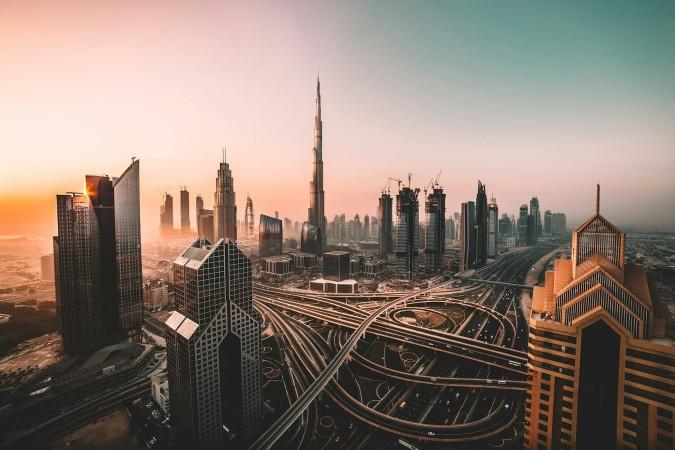
Sunrise shot of Downtown Dubai and the Burj Khalifa - © David Rodrigo
Top Attractions in Dubai
Dubai offers a treasure trove of its iconic landmarks, blending modern marvels with historic gems. From the thrill-seekers to culture buffs, Dubai’s attractions cater to everyone, offering a unique glimpse into the city’s incredible diversity.
Burj Khalifa
The Burj Khalifa, an iconic emblem of Dubai's skyline, is the world's tallest structure, standing at 828 meters. Its striking design is inspired by Islamic architecture, and it stands as a global symbol of innovation and ambition. Visitors can ascend to the At The Top observation decks on the 124th, 125th, and 148th floors for breathtaking panoramic views of the city, the Arabian Gulf, and even the desert stretching beyond the horizon.
Palm Jumeirah
This world-famous island is home to luxury resorts, including the spectacular Atlantis, The Palm, which features a massive water park, and the enchanting Lost Chambers Aquarium. Visitors can enjoy fine dining at award-winning restaurants such as Nobu and Hakkasan, relax at exclusive beach clubs or take a yacht tour around the island for stunning views of Dubai’s coastline.
Dubai Mall
More than just a shopping destination, the Dubai Mall is a world-class entertainment complex that offers experiences for all ages. As the largest mall in the world, it houses over 1,200 stores, including luxury brands like Gucci, Chanel, and Louis Vuitton. Beyond shopping, visitors can explore the Dubai Aquarium and Underwater Zoo, which showcases over 140 species of marine life, or enjoy an indoor ice-skating rink at Dubai Ice Rink.
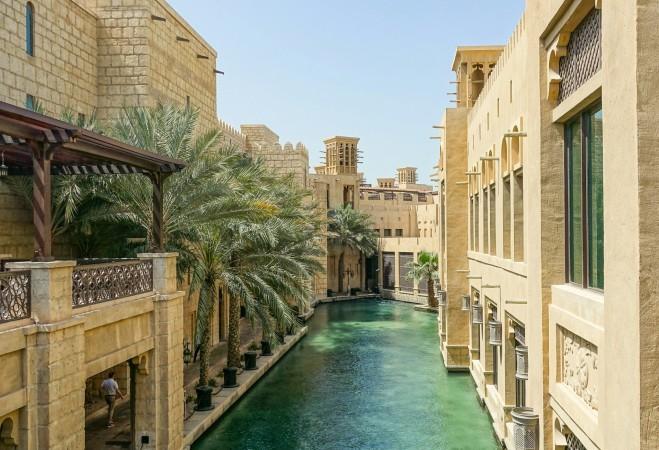
Palm Jumeirah - © Zosia Szopka
Must-Try Dishes in Dubai
Dubai’s diverse cuisine is a reflection of its melting pot of cultures, blending traditional Emirati flavors with global influences from the Middle East, Asia, and beyond.
- Shawarma: A quintessential street food in Dubai, shawarma consists of marinated, spit-roasted meat (usually chicken or lamb) wrapped in flatbread and served with garlic sauce, pickles, and fries.
- Al Harees: A staple of traditional Emirati cuisine, Al Harees is a simple yet flavorful dish made from wheat and meat, slow-cooked to a porridge-like consistency. Often served during Ramadan and festive occasions, it’s a dish that embodies the rich heritage of Dubai.
- Machboos: Similar to biryani, Machboos is a fragrant rice dish cooked with tender meat (chicken, lamb, or fish) and a blend of spices such as saffron, cardamom, and cinnamon. It’s a hearty, flavorful meal commonly enjoyed in Emirati households.
- Luqaimat: These sweet, golden dumplings are made from flour, yeast, and sugar, deep-fried until crispy, and then drizzled with date syrup or honey. Luqaimat is a popular dessert, especially during Ramadan, and is loved for its crunchy exterior and soft, doughy center.
- Balaleet: A unique Emirati breakfast dish, Balaleet combines sweet and savory flavors. It’s made from sweetened vermicelli noodles flavored with saffron and cardamom, served with an omelet on top. It’s a light yet satisfying meal that highlights the balance of flavors in Emirati cuisine.
- Karak Chai: Not a dish, but a must-try beverage, Karak Chai is Dubai’s take on Indian-style spiced tea. Made with black tea, milk, and a mix of cardamom, ginger, and sugar, it’s a comforting drink enjoyed by locals and tourists alike, often from small street-side cafés.
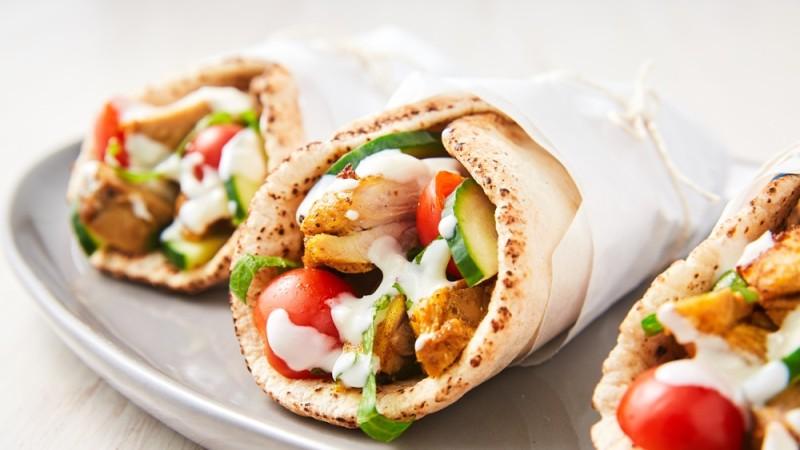
Shawarma - © Delish
Festivals & Local Celebrations
Dubai is home to numerous festivals and celebrations throughout the year, offering visitors a chance to experience the city’s rich cultural heritage and vibrant modern lifestyle.
Dubai Shopping Festival (DSF)
The Dubai Shopping Festival (DSF), which takes place every year from December to January, is one of the city's largest events. Visitors can enjoy huge discounts at malls and boutiques, exclusive product launches, and incredible raffle prizes. Beyond shopping, DSF features daily fireworks, fashion shows, live performances, and street festivals. It’s a family-friendly event with attractions like outdoor carnivals, kids’ workshops, and food festivals.
Dubai International Film Festival (DIFF)
DIFF brings together filmmakers, actors, and cinephiles from around the world to celebrate cinema, with a special focus on films from the Arab world. Over several days, DIFF screens a diverse selection of films, including world premieres, documentaries, and short films, offering a platform for both established and emerging filmmakers.
Eid Celebrations
Dubai is an incredible spot to celebrate Eid al-Fitr and Eid al-Adha, two of Islam's most important holidays. Eid al-Fitr marks the end of Ramadan, the holy month of fasting, while Eid al-Adha commemorates the willingness of the Prophet Ibrahim to sacrifice his son in obedience to God. During these times, Dubai comes alive with celebrations that include public prayers, family gatherings, feasts, and charitable activities.
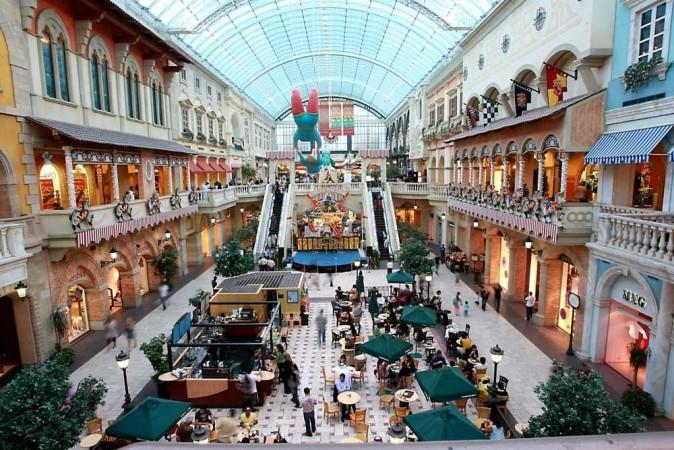
Dubai Shopping Festival - © Mercato Shopping Mall
What to Do in Dubai
- Adventure Sports in Dubai: Dubai is a top destination for thrill-seekers. Skydive Dubai provides skydives over the gorgeous Palm Jumeirah, dune bash in the desert, and sandboarding. Water sports like jet skiing, parasailing, and kite surfing are also popular along Dubai’s coastline.
- Desert Safari in Dubai: A desert safari is one of the most iconic activities in Dubai. After dune bashing in a 4x4 vehicle, you can ride camels, try henna painting, and watch live performances, including belly dancing and Tanoura shows, all while enjoying a traditional Bedouin meal under the stars.
- Cultural Experiences in Dubai: If you’re more into history and culture, take a stroll through the Al Fahidi Historical District or visit the Dubai Museum. For a taste of local culture, hop on a traditional dhow boat and cruise along Dubai Creek, or take a walking tour of the bustling Gold Souk and Spice Souk in Deira.
Shopping in Dubai
- Dubai Mall: Dubai Mall is the world's largest mall, providing an unrivaled shopping experience with luxury brands such as Gucci and Louis Vuitton with high-street fashion. Beyond shopping, the mall also features attractions like the Dubai Aquarium and Ice Rink, making it a destination for the whole family.
- Mall of the Emirates: Another premier shopping destination, Mall of the Emirates is home to Ski Dubai, an indoor ski resort, as well as a wide range of international retailers. Visitors can enjoy everything from fine dining to family-friendly entertainment.
- Gold Souk: This bustling market is home to hundreds of dealers that sell stunning gold jewelry at moderate prices. It's a must-visit for anyone interested in purchasing gold, but even if you're not buying, it’s worth a visit just to admire the craftsmanship.
- Spice Souk: Located near the Gold Souk, the Spice Souk is a sensory experience where vendors sell fragrant spices, dried fruits, and herbs. It’s the perfect place to pick up local ingredients and souvenirs.
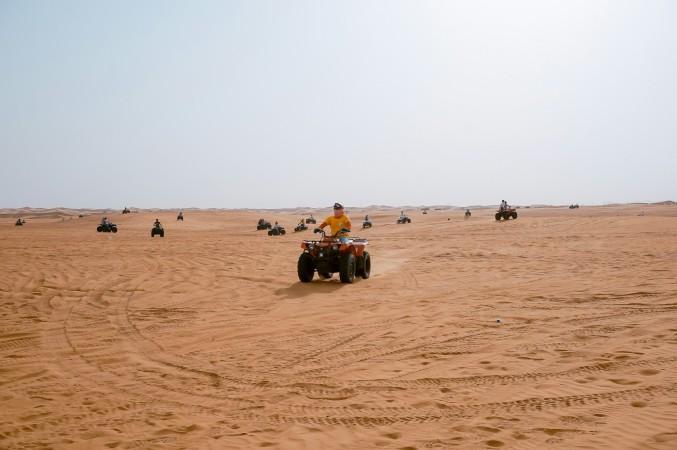
Desert Safari in Dubai - © Toa Heftiba
Weather in Dubai: Best Time to Visit
Dubai is known for its warm, sunny weather year-round, with two main seasons: hot summers and mild winters. Dubai sees very little rain, averaging around 5 days per year, typically during the winter months.
Summer in Dubai
The summer months in Dubai can be extremely hot, with temperatures often exceeding 40°C (104°F), combined with high humidity. Outdoor activities are limited during this time, but Dubai’s world-class indoor attractions, such as malls, indoor theme parks, and air-conditioned hotels, make it a viable destination even in the peak of summer. If you do visit during this season, plan for early mornings or late evenings for outdoor exploration.
Winter in Dubai
Winter is the best time to visit Dubai, with average temperatures ranging between 17°C to 25°C (63°F to 77°F). The cooler climate makes it ideal for enjoying outdoor activities like beach visits, desert safaris, and exploring the city’s landmarks. This is also the peak tourist season, so expect bustling crowds at major attractions.
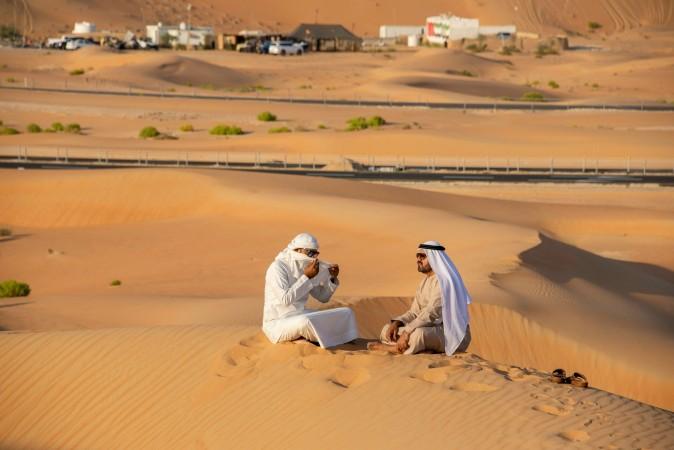
Chilling at the desert right outside Dubai - © Sajimon Sahadevan
Essential Travel Information
Getting Around Dubai
- Dubai Metro: The Dubai Metro is a clean, affordable, and fully automated rail system that connects major parts of the city. The metro is divided into Gold Class, which offers a more luxurious experience, and Standard Class.
- Taxis: Taxis are widely available and are relatively affordable compared to Western cities. For women traveling alone, pink taxis with female drivers are available for added comfort.
- Ride-hailing Apps: Uber and Careem are the most popular ride-hailing apps in Dubai, offering the convenience of cashless payments and the ability to book rides on demand.
- Abra (Water Taxi): For a unique experience, take an Abra, a traditional wooden boat, to cross Dubai Creek. It’s an inexpensive and scenic way to travel between Deira and Bur Dubai, the city’s historical neighborhoods.
- Public Buses: Dubai’s public bus system covers most areas of the city and is a cost-effective option for budget travelers.
ATM & Banking Services
ATMs are widespread and can be found in malls, hotels, airports, and tourist areas, accepting most international cards for cash withdrawals in local currency. Credit and debit cards are widely accepted across Dubai though it's advisable to carry some cash for smaller purchases or when visiting local markets. For those needing more complex banking services, Dubai provides easy access to international financial institutions, ensuring tourists can manage their finances conveniently throughout their stay.
Where to Stay in Dubai
- Luxury Hotels: Dubai is renowned for its ultra-luxury hotels, featuring stunning architecture, private beaches, high-end spas, and gourmet dining experiences. Many luxury hotels are located along the coastline or near iconic landmarks, offering breathtaking views and exceptional service.
- Mid-range Hotels: Dubai has numerous mid-range hotels offering quality services at reasonable prices. These hotels provide modern amenities, such as pools, fitness centers, and dining options, often located conveniently near major attractions and public transport hubs.
- Family-Friendly Resorts: Families traveling to Dubai can choose from a wide variety of family-friendly resorts that offer large rooms, kids' clubs, and recreational activities like waterparks, beach access, and entertainment programs.
Articles for you

Explore Yala National Park - Sri Lanka Travel, Asia
Tucked away in Sri Lanka’s southeastern corner, Yala National Park is where wild nature meets deep tradition. Known worldwide for its leopard population, the park is also home to elephants, sloth bears, crocodiles, and hundreds of bird species. Beyond wildlife, Yala opens doors to a cultural landscape dotted with ancient temples, Buddhist ruins, and coastal villages. For travelers seeking more than just a safari, Yala offers a chance to explore eco-tourism, local communities, and sacred heritage sites.
Population: The Yala National Park area doesn’t have a human population.
Economy: The economy around Yala National Park thrives on a blend of eco-tourism, agriculture, and local services. Safari tours, eco-lodges, and cultural experiences drive steady income for nearby towns like Tissamaharama and Kataragama, supporting thousands of families.
Landmarks: Famous for Block I of Yala and wildlife encounters, including elephants, sloth bears, crocodiles, and exotic bird species.

Explore Galle - Sri Lanka Travel, Asia
Nestled on Sri Lanka’s southern coastline, Galle is a vibrant city where history meets the sea. Its cobbled streets, colonial architecture, and serene beaches make it a must-visit destination for travelers seeking a blend of culture, adventure, and relaxation. A UNESCO World Heritage site, Galle captivates visitors with its Dutch Fort, bustling markets, and friendly locals. Whether you’re exploring the ramparts at sunset or savoring fresh seafood by the shore, Galle promises an unforgettable journey into Sri Lanka’s heritage.
Population: Approximately 113,000 in 2023.
Economy: Galle’s economy thrives on tourism, trade, and fisheries. The city’s historic fort, colonial architecture, and coastal charm draw thousands of international visitors each year, making tourism its main economic driver. Fishing remains vital for local livelihoods, supplying fresh seafood across the region.
Landmarks: Famous for the Galle Fort, Dutch Reformed Church & Maritime Museum, and Unawatuna Beach.

Explore Bentota - Sri Lanka Travel, Asia
Nestled along Sri Lanka’s southwestern coast, Bentota is a tropical paradise that blends golden beaches, vibrant culture, and thrilling adventures. Famous for its calm waters, luxury resorts, and scenic river estuary, Bentota has become a top destination for travelers seeking both relaxation and authentic experiences. From serene beach walks at sunrise to adrenaline-pumping water sports, this coastal town offers a perfect balance of leisure and exploration. With its proximity to Colombo and Galle, Bentota is easy to reach, making it an ideal stop for both short escapes and extended holidays.
Population: Approximately 37,000 in 2023.
Economy: Bentota’s economy thrives mainly on tourism, which drives local businesses such as hotels, restaurants, and wellness retreats. The town also benefits from fishing, coconut cultivation, and handicrafts like wood carving and batik textiles. Many residents rely on the growing demand for water sports and Ayurvedic treatments, making tourism the backbone of both income and employment in the area.
Landmarks: Famous for Bentota Beach, Bentota River Safari, and Kande Vihara Temple.

Explore Mirissa - Sri Lanka Travel, Asia
Mirissa is a charming coastal town on Sri Lanka’s southern shoreline. Known for its golden beaches, turquoise waters, and vibrant marine life, it has become a must-visit stop for travelers exploring the island. Many come for whale watching, surfing, and sunset views at Coconut Tree Hill, but Mirissa offers much more than postcard beauty. The fishing boats you see anchored by the bay carry generations of stories. Local traditions, delicious cuisine, and a laid-back rhythm of life shape every visitor’s experience.
Population: Approximately 4,700 in 2023.
Economy: Mirissa’s economy is largely shaped by its coastal location. Fishing has long been the backbone of local livelihoods, with generations relying on the Indian Ocean for income. In recent decades, tourism has become the main driver of growth, thanks to whale watching, surfing, and beachside hospitality.
Landmarks: Famous for Mirissa Beach, Coconut Tree Hill, and Parrot Rock Bridge.

Explore Nuwara Eliya - Sri Lanka Travel, Asia
Tucked away in the Central Highlands of Sri Lanka, Nuwara Eliya is often called “Little England”. With its rolling tea plantations, cool misty mornings, and colonial charm, this mountain town feels like a step into another world. Travelers come here to breathe fresh air, walk through flower gardens, sip the finest Ceylon Tea, and enjoy a pace of life far from the island’s busy cities. Whether you’re drawn by scenic landscapes, heritage architecture, or the warmth of its people, Nuwara Eliya is a destination that blends nature, culture, and history in perfect harmony.
Population: Approximately 781,000 in 2023.
Economy: Nuwara Eliya’s economy thrives mainly on tea production, as it sits in the heart of Sri Lanka’s central highlands, famous worldwide for Ceylon Tea. The city also benefits from a growing tourism industry, attracting visitors with its colonial charm, cool climate, and scenic landscapes.
Landmarks: Famous for Gregory Lake, Hakgala Botanical Garden, and Victoria Park.

Explore Sukau - Malaysia Travel, Asia
Nestled on the banks of the Kinabatangan River in Sabah, Malaysian Borneo, Sukau is a destination where wildlife, culture, and conservation come together. Known as one of Asia’s top spots for river safaris and eco-tourism, this quiet village offers a front-row seat to encounters with Bornean orangutans, pygmy elephants, proboscis monkeys, and exotic birdlife.
Population: Approximately 1,400 in 2019.
Economy: Sukau’s economy is shaped by its riverine location and natural resources. Traditionally, the Orang Sungai community relied on fishing, small-scale farming, and forest gathering for their livelihood. Today, the village has shifted toward eco-tourism, with river cruises, jungle trekking, and homestays providing income.
Landmarks: Famous for the Kinabatangan River cruises, Gomantong Caves, and Ox-bow lakes and wetlands.
